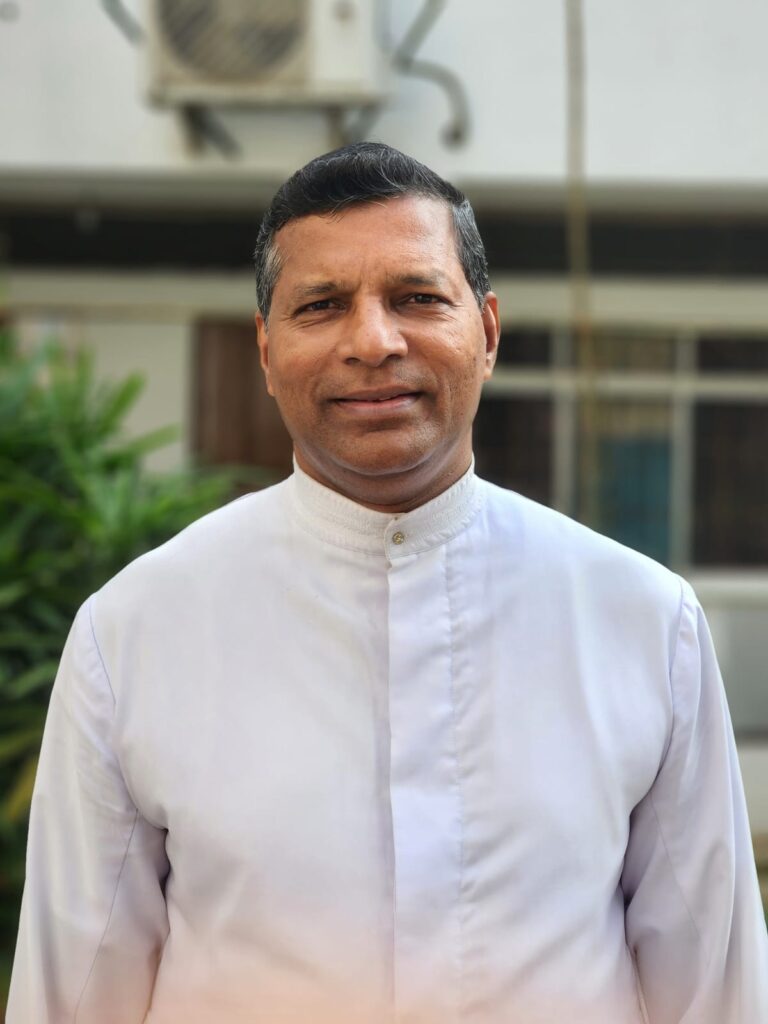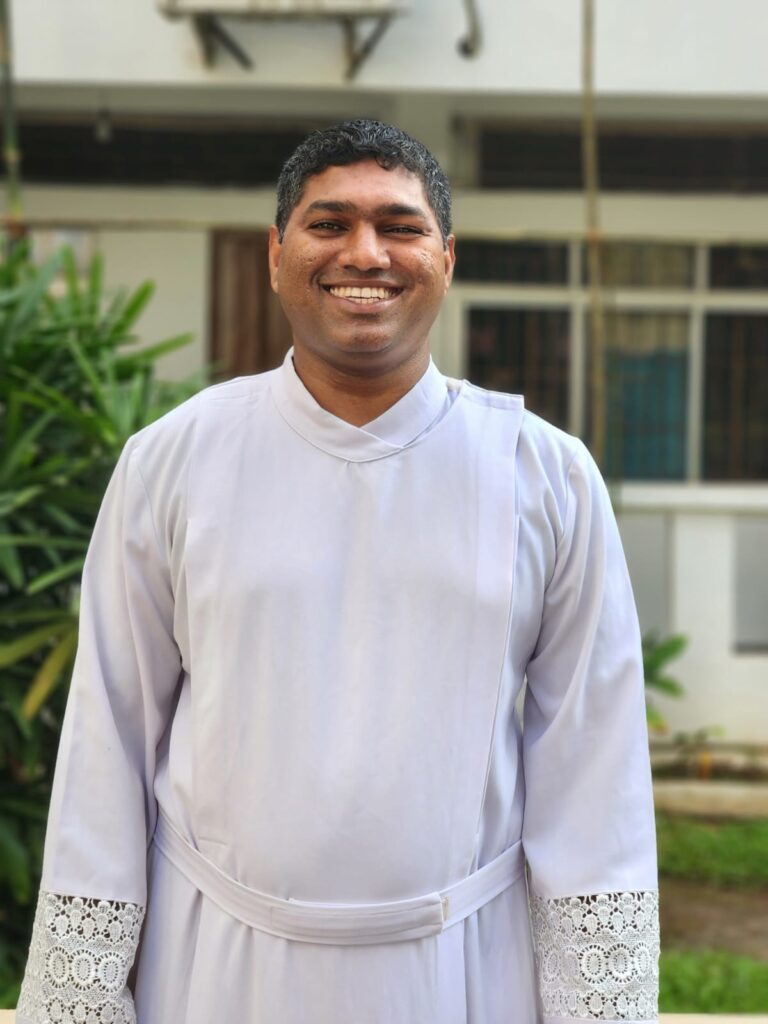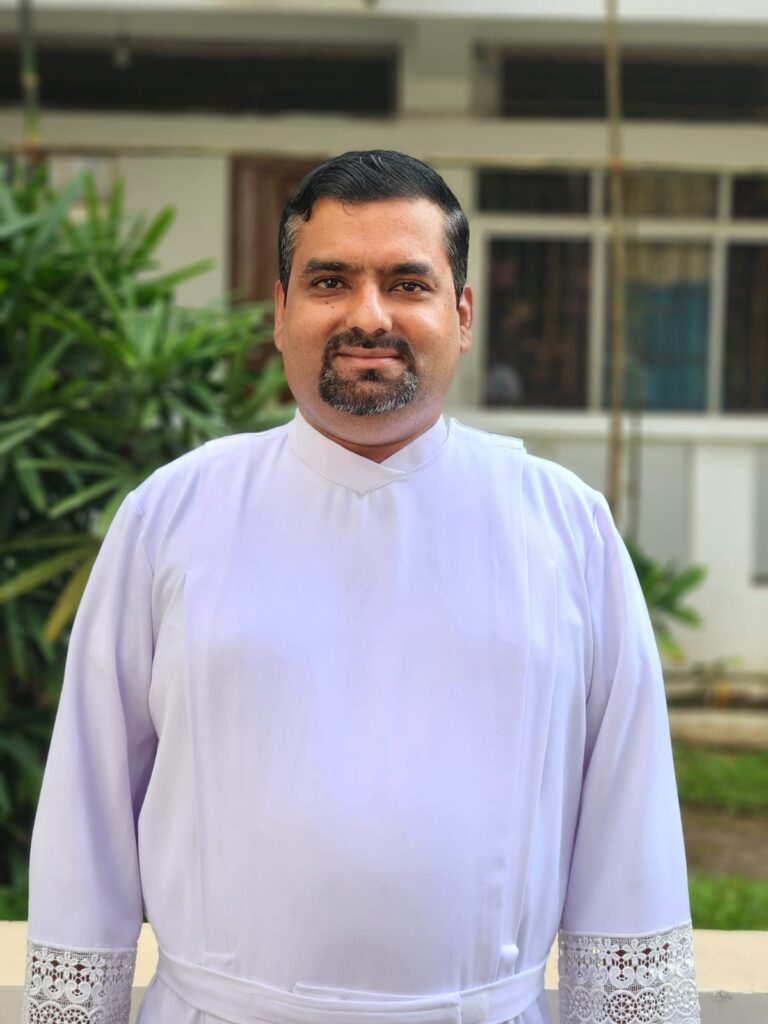A few words
About Us
Priests in St. Alex Church Calangute
Our priests are dedicated spiritual leaders who guide our community in faith and service.

Rev. Fr. Polly Lobo
Parish Priest - St. Alex Church, Calangute

Rev. Fr. Peter Fernandes
Assistant to the Parish Priest

Rev. Fr. Denrish D'costa
Assistant to the Parish Priest

Rev. Fr. Joevit D’Costa
Assistant to the Parish Priest
History
Discovering the History and Beauty of
St. Alex Church, Calangute
The Calangute Church stands out impressively among the palm branches. Its Frontier facing the rising sun and the back to the Arabian Sea. A visitor to our village coming by the Chogam Road after crossing the Boa Viagem hill cannot miss the Majestic appearance of the Church. In fact the road appears to lead straight to the Church, however it turns beautifully around it. The Church towers and the false dome create an artistic impression on the visitor. The sparkling white walls blend beautifully with the palm green background.
Let us take this opportunity to know a little bit of how and when our Church (St. Alex Church, Calangute) began and some details of the Interior of our church. (Extracts taken from the 400 Centenary Magazine 1995-96)
Beginning of St. Alex Church, Calangute
The Church in Calangute has a long history of over 400 years. In the year 1554-1555 the city of Goa and is immediate surroundings, was divided among the Religious orders. The Doinicans were given fifteen villages in Illhas, the Jesuits the rest of Illhas and the province of Salcette. Bardez was entrusted to the Franciscans. The Franciscan friars arrived to start their missionary work with the people. In 1576 they built a small shack of thatched palm leaves on the seashore of Calangute, in actual Poriat to serve as their chapel and place of worship. This was the first church to ever be built in Calangute. In the year 1595 due to the increase in the number of parishioners the second Church was built in the same place. During the year 1602 – 1605 that Church was burnt down. After which a third Church was built. By the year 1720 there were 3,947 Catholics in Calangute and a need was felt for a spacious and well-constructed Church. It was then that the The Present existing Calangute Church was built with the help of all the gaonkars in the year 1741.
The Grotto of Our Lady of Lourdes- In the Church yard there is a Grotto of Our Lady of Lourdes. It is said that, it was the first Grotto dedicated to Our Lady in entire Goa.
Altars- Calangute Church can boast of Seven Altars. The three main altars are located centrally in the nave with the four others being ranged around the sides of the church. Altars were needed in the Pre-Vatican II days, as Priests said Mass individually with their backs to the faithful. The Central altar has a niche on the top, where the Patron Saint of the village St. Alex stands with his begging bowl. The altar consists of two halves which can be joined or rolled out. The main altar is dedicated to St. Alex, which is just below a huge crown most probably depicting that the austere life and humility won him a place in the kingdom of God. It is backed by a magnificent gilded reredos, complete with statues of the angels and the saints.
Pulpit- The Pulpit (Roccoco Style ) was supposed to have been brought to Calangute from St Boaventura College Old Goa. The pulpit has been described by Prof. Jose Pereira as “a palpitation of volutes, can touches, encincture, canopy, pendants, flounces and tassels, all crested by the figure of the lamb of Apoclypse in the book of Seven Seals – a vision of white-and-gold climaxed by the symbol of an innocent victim God, or of the elegance of the Rococo going up in a flame of mystical flamboyance.”
Life of St Alex
Saint Alex is said to have been born to a wealthy and virtuous Roman senator and his devout Catholic wife after praying to God for a child. Raised with the belief that the prosperous should use their wealth to help the poor, Alex received an excellent education in Rome before secretly leaving for Syria and eventually settling in Edessa, where he lived as a beggar outside a church dedicated to the Blessed Virgin Mary.
After an image in the church spoke in defense of Alex and revealed his holiness, he fled to Tarsus and then returned to Rome, where he lived in poverty and anonymity beneath the stairs in his childhood home. Despite being unrecognized by his own parents and enduring mistreatment from their servants, Alex remained patient and humble for 17 years until his death.
When his body was found, a scroll detailing his life and identity was discovered with him. The church bells rang of their own accord and a voice urged Pope Innocent I and the Roman Emperor to search for the “man of God.” Alex’s parents were saddened to learn that the beggar they had employed and fed had been their own son, but they also recognized his holiness and the sacrifices he had made for the love of God.
How did our Church in Calangute get its name?
The answer to this question is quite uncertain. We made an attempt to try and find out the same by asking some Priests, gaonkars, elderly people but we couldn’t reach to a conclusion. But may be that during the 15 century Bardez was evangelized by the Franciscans and its members strive to cultivate the ideals of poverty and charity which is similar to the life of Our Patron and hence the church could have been devoted to St Alex.
In fact many Churches in Bardez if you would have noticed the Churches will be having the statues of St Francis of Assisi (founder of the Franciscan Order – 1181/2- October 1226) and St Anthony of Padua (Priest & friar of the Franciscan Order 1195 –1231). In our church on either side of the main altar to the right is the Statue of St Anthony of Padua and the one to the left the Statue of St Francis of Assisi.
